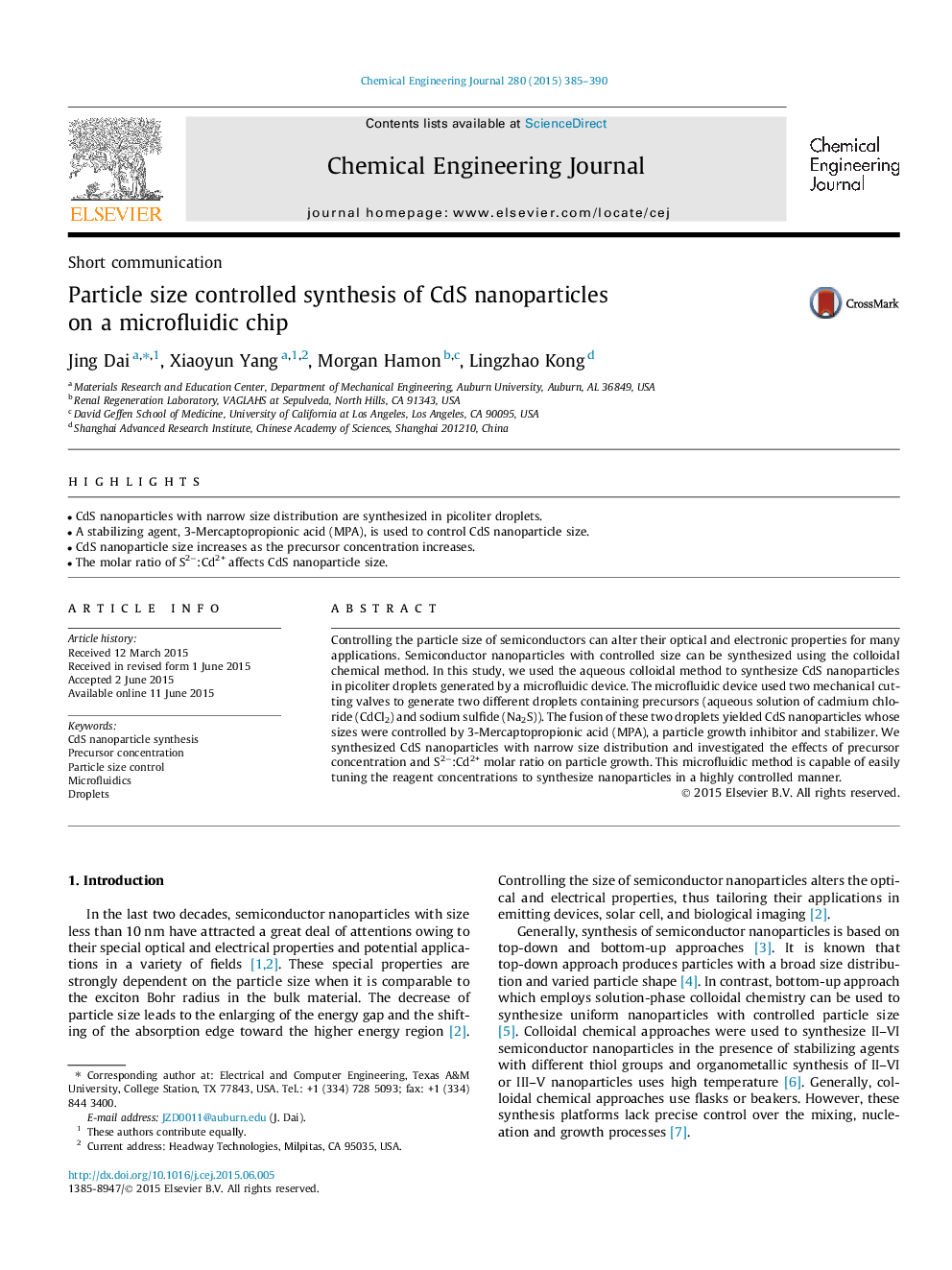| Article ID | Journal | Published Year | Pages | File Type |
|---|---|---|---|---|
| 6584661 | Chemical Engineering Journal | 2015 | 6 Pages |
Abstract
Controlling the particle size of semiconductors can alter their optical and electronic properties for many applications. Semiconductor nanoparticles with controlled size can be synthesized using the colloidal chemical method. In this study, we used the aqueous colloidal method to synthesize CdS nanoparticles in picoliter droplets generated by a microfluidic device. The microfluidic device used two mechanical cutting valves to generate two different droplets containing precursors (aqueous solution of cadmium chloride (CdCl2) and sodium sulfide (Na2S)). The fusion of these two droplets yielded CdS nanoparticles whose sizes were controlled by 3-Mercaptopropionic acid (MPA), a particle growth inhibitor and stabilizer. We synthesized CdS nanoparticles with narrow size distribution and investigated the effects of precursor concentration and S2â:Cd2+ molar ratio on particle growth. This microfluidic method is capable of easily tuning the reagent concentrations to synthesize nanoparticles in a highly controlled manner.
Related Topics
Physical Sciences and Engineering
Chemical Engineering
Chemical Engineering (General)
Authors
Jing Dai, Xiaoyun Yang, Morgan Hamon, Lingzhao Kong,
